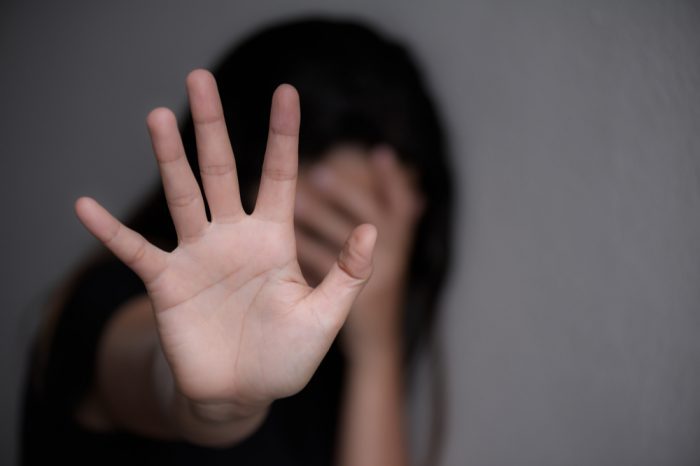Here’s how hallucinogenic medicine may well be the next step in healing.
According to the World Health Organization, one in four people will be diagnosed with a mental health condition at some point in their lives. Currently, 450 million people suffer from one, yet only one-third of those afflicted ever seek help. With so much collective pain and an ever-increasing suspicion of pharmaceutical interventions, the stage seems set for a quantum leap in healing with hallucinogenic medicine.
How Hallucinogenic Plants May Help Many Modern Conditions
Countless forms of psychedelic medicines exist, some of which have a tradition going back millennia. The shamanic use of plants like San Pedro, Peyote, Iboga, and Ayahuasca show tremendous healing benefits when administered and supervised by trained individuals. And while the west has traditionally been reluctant to embrace such methods of healing, it now seems that the study and eventual regulation of psilocybin, LSD, ketamine, and MDMA are a distinct possibility.
Here’s what different types of hallucinogenic medicine could do, if made legal.
Psilocybin
Psilocybin is the active ingredient in magic mushrooms. Accordingly, it works primarily by decreasing brain activity in the default mode network. Basically, this is an area of the brain known to enable self-reflection, mental time travel, and the ability to imagine the mental states of others.
When used within a therapeutic environment to treat conditions such as smoking cessation, treatment-resistant depression, and anxiety, the results have been nothing short of dramatic.
A study carried out at Johns Hopkins University (2016) investigated whether psilocybin could decrease both depression and anxiety in terminal cancer patients.[1]Griffiths, R. R., Johnson, M. W., Carducci, M. A., Umbricht, A., Richards, W. A., Richards, B. D., Cosimano, M. P., & Klinedinst, M. A. (2016). Psilocybin produces substantial and sustained … Continue reading Eighty volunteers with a terminal illness took part in the study. The mystical experiences they encountered led to many of them feeling much more connected to a wider reality, having had a reassuring glimpse of the afterlife.
A “Notable Decrease” in Depression
According to researchers, eighty percent of the subjects experienced a notable decrease in depressed mood and end-of-life anxiety, lasting for at least six months. Another Johns Hopkins study (2014) investigated how psilocybin might aid in smoking cessation.[2]Johnson, M. W., Garcia-Romeu, A., & Griffiths, R. R. (2017). Long-term follow-up of psilocybin-facilitated smoking cessation. The American journal of drug and alcohol abuse, 43(1), 55–60. … Continue reading Fifteen participants received two or three high doses of psilocybin along with cognitive-behavioral therapy (CBT) for smoking cessation.
In the follow-up carried out twelve months later, sixty-seven percent of participants still refrained from smoking. The result far exceeds the results of any other treatments, where the main challenge is long-term abstinence. The results led to the scheduling of further studies to help determine the effectiveness of psilocybin as a therapy for Alzheimer’s, PTSD, and alcoholism.
LSD
Since its synthesis in 1938, LSD became known for its ability to catalyze spiritual experiences and promote feelings of profound interconnection and oneness. Throughout much of its history, LSD became infamous for the widespread recreational use during the counterculture revolution beginning in the early 1960s.
In more recent times, groups like The Multidisciplinary Association for Psychedelic Studies (MAPS) began working with LSD in a very different way. LSD is of particular use in the treatment of anxiety associated with a life-threatening illness where MAPS recently completed a Phase Two pilot study on twelve subjects with LSD for anxiety relief.
LSD also seems to exhibit positive benefits on mood and personality traits. A study published in Human Brain Mapping (2016) evaluated the effects of LSD on the mood of a group of twenty subjects. Two weeks after dosing with 75 ug of LSD, they scored higher in tests for optimism, openness, creativity, and imagination.[3]Lebedev, A. V., Kaelen, M., Lövdén, M., Nilsson, J., Feilding, A., Nutt, D. J., & Carhart-Harris, R. L. (2016). LSD-induced entropic brain activity predicts subsequent personality change. Human … Continue reading
LSD targets various brain receptors, including dopamine, adrenergic, glutamate, and 5H2TA serotonin receptors. It leads to parts of the brain communicating in new ways, especially in the Neo-cortex region. The resulting decreased blood flow in the default mode network allows some to transcend the ego and obtain a sense of reconnection and oneness with the world and have deeply meaningful spiritual experiences.
Ketamine
Recent science suggests that ketamine harbors a unique ability to target depression in a way that traditional treatments don’t. Accordingly, a study published in the American Journal of Psychiatry (2013) reported that ketamine could effectively treat the ever-increasing number of patients who are resistant to conventional antidepressants.[4]Murrough, J. W., Iosifescu, D. V., Chang, L. C., Al Jurdi, R. K., Green, C. E., Perez, A. M., Iqbal, S., Pillemer, S., Foulkes, A., Shah, A., Charney, D. S., & Mathew, S. J. (2013). … Continue reading
Traditional antidepressants work by controlling levels of specific neurotransmitters, like serotonin, in the brain. But, scientists are finding that low serotonin isn’t the whole story when it comes to depression. Raising serotonin alone isn’t enough for the non-responders to SSRI’s, who number thirty to fifty percent of affected patients.
Moreover, a study published in Psychiatry Research (2015) found that ketamine works by modifying the activity of the excitatory neurotransmitter glutamate. Glutamate makes neurons more active and is found in half of all connections in the brain and produces wide-ranging effects.[5]Dutta, A., McKie, S., & Deakin, J. (2015). Ketamine and other potential glutamate antidepressants. Psychiatry research, 225(1-2), 1–13. https://doi.org/10.1016/j.psychres.2014.10.028
Where traditional SSRI’s take weeks to start working, the antidepressant effects of ketamine take mere hours to take effect. Ketamine also produces an array of other neurotransmitters that aid in the creation of new neural connections. When combined with cognitive-behavioral therapy (CBT), it may allow patients to develop new pathways and change old behavioral patterns permanently.
MDMA
While many consider it a recreational drug, MDMA can impart psychedelic effects. When used in the right environment, and with intention, it can be immensely therapeutic. The most well-known case for MDMA is as a treatment for PTSD. According to MAPS, those afflicted with PTSD who take MDMA in the company of a trained psychotherapist can reverse the symptoms of PTSD in as little as three sessions.
MDMA generates feelings of wellbeing and love within the patient and generates an abundance of feel-good neurochemicals like oxytocin. In the presence of a trained psychotherapist, this brain state allows patients to process old traumatic memories within the context of a very different mindset with heightened feelings of love and connection. This results in an ability to naturally process memories before consolidating them into longterm memory without the associated trauma.
What is the Drawbacks of Hallucinogenic Medicine?
When carried out in an environment where subjects don’t feel safe, psychedelic experiences can sometimes become very intense and frightening, and may even lead to self-harm.
Anyone experimenting with psychedelics should work with someone experienced. Basically, it is the job of this person to watch over and control the situation, should difficult experiences arise. While difficult experiences are often beneficial in terms of longterm healing, they should always take place in a safe environment where patients can face the fear head-on that arises.
By and large, psychedelics are non-addictive and non-toxic, and while there is the potential for recreational abuse, thy don’t represent the same danger as many hard drugs.
Is Hallucinogenic Medicine Legal in Canada or the US?
Recent developments suggest that legal psychedelics may become a thing in the not too distant future. Further, in a development that resonates with the early days of the cannabis legalization movement, cities like Denver, Santa Cruz, and Oakland have all decriminalized psilocybin in light of emerging science.
MDMA looks set to become legal for therapeutic purposes very soon, as MAPS finalize Phase Three trials for FDA approval. Further, the FDA already approved ketamine for treatment-resistant depression. Basically, this makes it available to patients who haven’t had success with at least two forms of traditional medication.
For those looking for more of a shamanic experience directly with plants, then the Native American Church (NAC) combines Christian teaching with the sacramental use of the mescaline-containing peyote cactus. The NAC originated in the southern US in the late 1800s, and it now extends up into Canada with an estimated 250,000 followers.
Legal psychedelics have the potential to reform our approach to healing by tackling the root cause of our collective issues. But they also tend to dissolve the boundaries and structures currently in place in different cultures around the globe. If there’s one common takeaway from psychedelic experiences, then it’s that people tend to see through the aforementioned structures; and the threat that this poses to current governments is perhaps the biggest threat to their eventual legalization.
References





